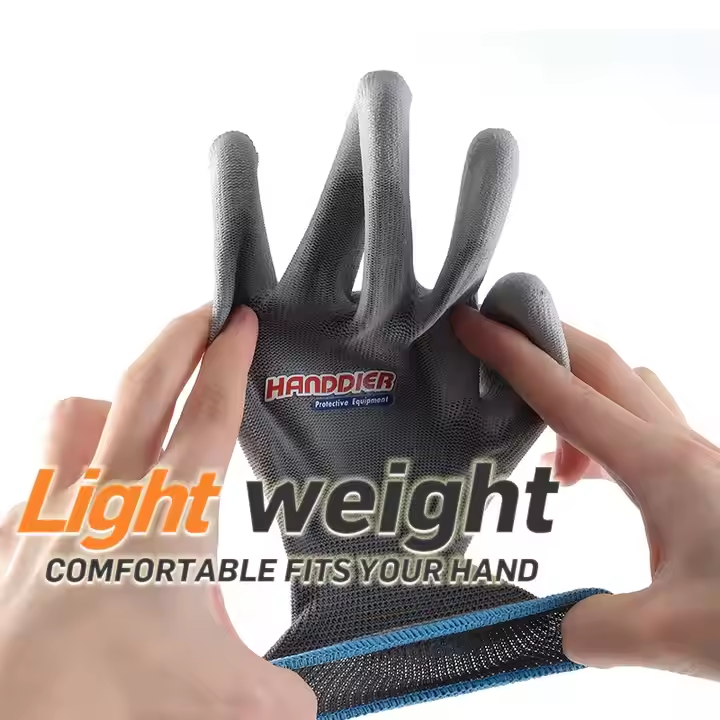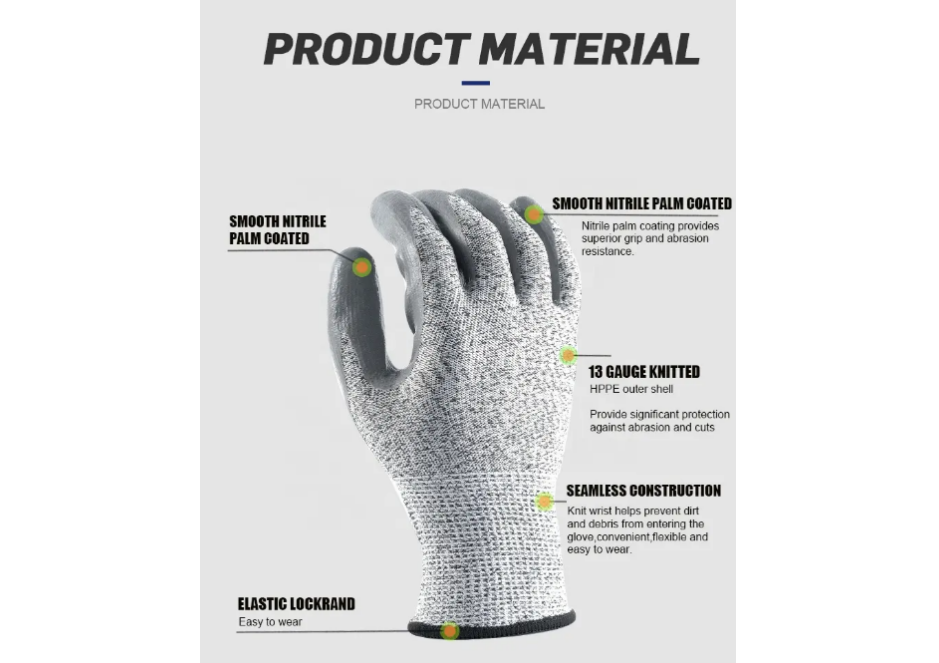
Are you struggling to find gloves with the perfect grip? Whether for industrial tasks or gardening, choosing the right glove coating can save you time, money, and effort. Let me guide you through the best options.
The best glove coating for grip depends on your specific needs, but nitrile, latex, and polyurethane are top choices for different environments.
For industrial work or detailed tasks, selecting the right grip can make or break productivity. Let’s explore the materials and coatings that stand out.
What is the best material for glove grips?
The material of the glove grip directly determines its functionality. Each material has its own strengths depending on the task.
Nitrile, latex, and polyurethane are some of the best materials for glove grips due to their durability and versatility in industrial and everyday tasks.

Dive deeper into the features of these materials:
1. Nitrile Coating
Nitrile is resistant to oil, grease, and chemicals. It provides an excellent grip in oily environments. This makes it a popular choice for industries like automotive and construction.
| Feature | Benefit |
|---|---|
| Oil resistance | Excellent for slippery conditions |
| Durability | Long-lasting |
| Puncture resistance | Suitable for heavy-duty tasks |
Nitrile gloves are often used when working with tools or materials that require a firm grip under wet or greasy conditions.
2. Latex Coating
Latex offers superior elasticity and a strong grip in both dry and wet conditions. It’s widely used in gardening and general construction.
| Feature | Benefit |
|---|---|
| High elasticity | Great for flexibility and comfort |
| Wet grip | Reliable even in wet environments |
However, latex is not suitable for people with latex allergies and has limited resistance to oils and chemicals.
3. Polyurethane (PU) Coating
PU-coated gloves provide a lightweight feel and precision. This material is perfect for tasks requiring dexterity, like electronics or assembly work.
| Feature | Benefit |
|---|---|
| Lightweight | Reduces hand fatigue |
| Precision handling | Ideal for detailed tasks |
Polyurethane’s softness makes it great for jobs that require maximum touch sensitivity.
What is the best grippy material?
Choosing the best grippy material depends on the surface and environment you work in. Grippy materials ensure safety and efficiency.
For the best grip, nitrile and latex are ideal for wet and oily conditions, while textured PU excels in dry precision work.
Understanding the surface textures of glove coatings is crucial. For example, nitrile’s microporous surface offers excellent oil absorption, while latex’s natural tackiness provides superior wet grip. Let’s break it down:
Nitrile vs. Latex vs. PU: Which Grips Better?
| Coating | Best for Conditions | Grippy Features |
|---|---|---|
| Nitrile | Oily and greasy environments | Microporous surface for oil absorption |
| Latex | Wet and dry environments | Natural tackiness for wet grip |
| Polyurethane | Dry precision tasks | Lightweight and textured grip |
Common Uses by Industry
- Construction: Nitrile for heavy-duty work and oily materials.
- Gardening: Latex for excellent flexibility and comfort.
- Electronics: PU for detailed assembly tasks.
Selecting the right material improves not only grip but also reduces strain on your hands during long work hours.
What is the best coating for work gloves?
The coating on work gloves determines their functionality, durability, and comfort in different work environments.
The best coatings for work gloves include nitrile for oil resistance, latex for elasticity, and PU for lightweight precision.

Here’s a more detailed look at common glove coatings:
1. Foam Nitrile Coating
Foam nitrile provides a breathable option for workers in hot environments. It is great for maintaining grip in oily conditions while allowing airflow to the hands.
- Best Use: Automotive and warehouse industries.
- Key Feature: Breathability reduces sweat buildup.
2. Smooth Latex Coating
Smooth latex gives a tacky grip, particularly in wet conditions. It is commonly used for manual labor tasks like bricklaying or landscaping.
- Best Use: Construction and gardening.
- Key Feature: High elasticity for comfort.
3. Sandy Nitrile Coating
Sandy nitrile offers an aggressive grip for heavy-duty tasks. The textured surface enhances grip on slippery tools or materials.
- Best Use: Heavy construction and glass handling.
- Key Feature: Superior abrasion resistance.
4. Dual-Coated Gloves
Some gloves combine coatings, such as nitrile and latex, to maximize grip and protection. These hybrid designs are versatile for various industries.
Which gloves are best for grip?
Selecting the best gloves for grip requires considering the work environment, material, and coating.
Nitrile-coated gloves are the most versatile for grip in oily environments, while latex excels in wet conditions, and PU is best for precision tasks.
When choosing gloves, always think about:
- Environment: Wet, dry, or oily.
- Task Type: Heavy-duty vs. precision work.
- Allergies: Latex-free alternatives like nitrile are available.
Application-Specific Recommendations
| Industry | Best Glove Type |
|---|---|
| Automotive | Foam nitrile-coated gloves |
| Construction | Sandy nitrile or smooth latex |
| Gardening | Latex-coated gloves |
| Electronics Assembly | PU-coated gloves |
Different industries have unique requirements, so understanding your tasks ensures the best fit.
Conclusion
Finding the best glove coating for grip starts with understanding your specific needs. Nitrile, latex, and polyurethane all offer unique benefits for various environments and tasks.

5 Responses
What excellent interlocutors
It was specially registered at a forum to tell to you thanks for the help in this question how I can thank you?
Just that is necessary, I will participate. Together we can come to a right answer.
Согласен, это забавная фраза
I am sorry, that has interfered… But this theme is very close to me. I can help with the answer.